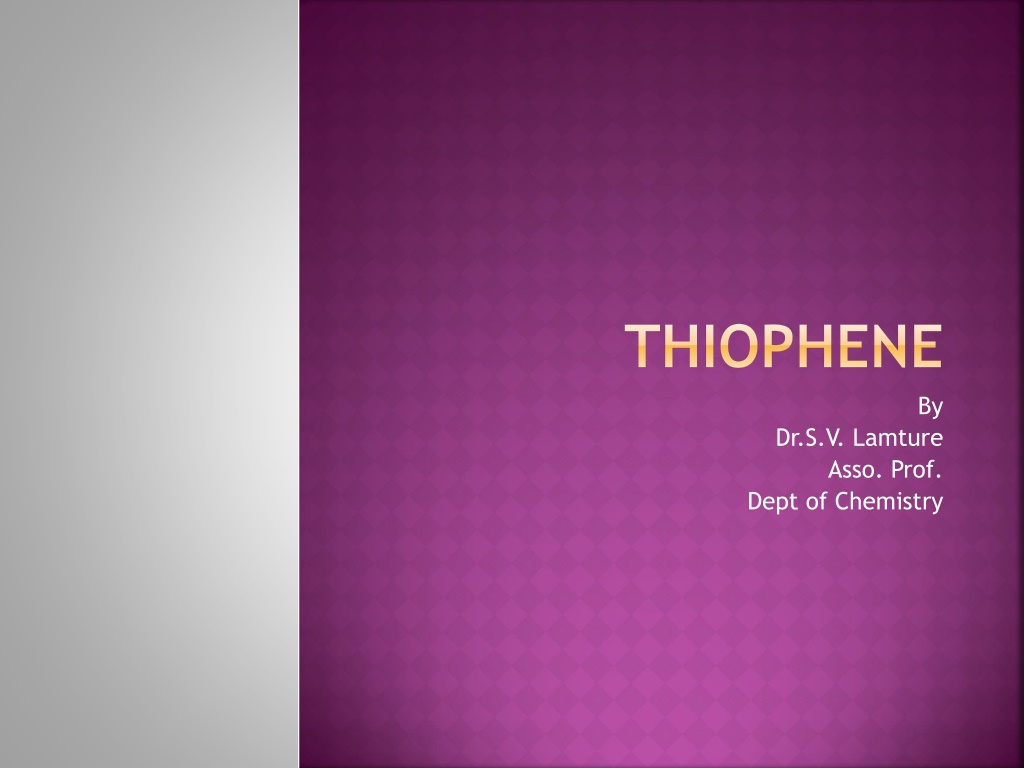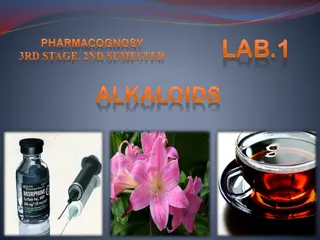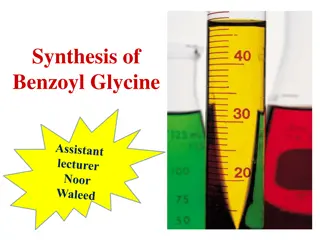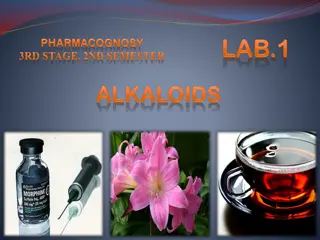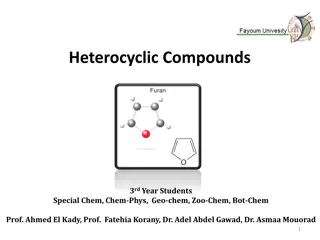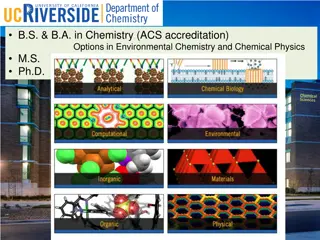Overview of Thiophene and Pyridine in Heterocyclic Chemistry
Thiophene is a versatile compound with unique properties, used in various applications such as agrochemicals and pharmaceuticals. Pyridine, another important heterocyclic compound, has diverse industrial uses and is synthesized through specific chemical processes. Both compounds play crucial roles in organic chemistry.
Download Presentation

Please find below an Image/Link to download the presentation.
The content on the website is provided AS IS for your information and personal use only. It may not be sold, licensed, or shared on other websites without obtaining consent from the author. Download presentation by click this link. If you encounter any issues during the download, it is possible that the publisher has removed the file from their server.
E N D
Presentation Transcript
THIOPHENE By Dr.S.V. Lamture Asso. Prof. Dept of Chemistry
PROPERTIES OF THIOPHENE At room temperature, thiophene is a colorless liquid with a mildly pleasant odor reminiscent of benzene. It s boiling point is 84 C and melting point -38 C. It is insoluble in water but freely soluble in ethanol, ether and acetone. The high reactivity of thiophene toward sulfonation is the basis for the separation of thiophene from benzene. Thiophene is much more reactive than benzene , thus thiophene undergoes the electrophilic substitution reactions like benzene , under moderate condition.
USES OF THIOPHENE Thiophenes are important heterocyclic compounds that are widely used as building blocks in many agrochemicals and pharmaceuticals. The benzene ring of a biologically active compound may often be replaced by a thiophene without loss of activity. This is seen in examples such as the NSAID lornoxicam, the thiophene analog of piroxicam.
6-MEMBERED HETEROCYCLIC COMPOUNDS With heterocycles containing five atoms, the unsaturated compounds are frequently more stable because of aromaticity. For examples: Pyridine , Quinoline ,etc .. Quinoline Pyridine
PYRIDINE (AZABENZENE , AZINE ) C5H5N Pyridine is a basic heterocyclic organic compound with the chemical formula C5H5N. It is structurally related to benzene, with one methine group (=CH-) replaced by a nitrogen atom. The pyridine ring occurs in many important compounds, including azines and the vitamins niacin and pyridoxal. Pyridine occurs in coal tar (0.1%)and in the distillate from bones (bone oil) and has been produced industrially from these sources. According to the resonance theory, pyridine is considered to be hybrid of the following structures:
PREPARATION OF PYRIDINE Pyridine may be obtained by: 1. From acrolein by the following steps: Formation of acrolein from acetaldehyde and formaldehyde Condensation of pyridine from acrolein and acetaldehyde
PROPERTIES OF PYRIDINE Pyridine is colourless liquid. It s boiling point 115.5 C and melting point 41.6 C. It have characteristic unpleasant odor. It is soluble in water and most organic solvent . Pyridine is conventionally detected by the gas chromatography and mass spectrometry methods. USESOF PYRIDINE Pyridine is used as basic solvent I organic reactions. Pyridine is used to denature alcohol. It is also used for preparing sulfapyridine,
QUINOLINE (2,3-BENZOPYRIDINE) C9H7N Quinoline is a heterocyclic aromatic organic compound with the chemical formula C9H7N. It is a colorless hygroscopic liquid with a strong odor. It is a bicyclic heterocyclic having a benzene ring fused with a pyridine ring in 2,3-positions. It could be considered as naphthalene in which one CH in 2-position has been replaces by N. The official name of Quinoline is 1-Azanaphthalene. Quinoline
PREPARATION OF QUINOLINE Skraups Synthesis:- A mixture of aniline, glycerol and sulfuric acid is heated in the presence of a mild oxidizing agent such as nitrobenzene. The reaction being exothermic tends to be violent and FeSO4 is also called moderator. Glycerol Quinoline Aniline
PROPERTIES OF QUINOLINE Quinoline is a colourless liquid. It s boiling point 238 C and melting point -15 C. It has a disagreeable ,pyridine like odor. It is soluble in water and completely miscible with alcohol, ether and acetone. Quinoline gives all the reaction of pyridine and electrophilic substitution reactions of the benzene ring. USESOF QUINOLINE Quinoline is used as a high-boiling basic solvent in organic reactions. It is also used in the manufacture of pharmaceuticals, dyes and insecticides.
POLYNUCLEAR COMPOUNDS Polycyclic aromatic hydrocarbons are hydrocarbons organic compounds containing only carbon and hydrogen that are composed of multiple aromatic rings (organic rings in which the electrons are delocalized). Though poly- in these cases literally means "many", there is precedence in nomenclature for beginning this class and subclass with the two ring cases. Where naphthalene would therefore be considered a simple example; beginning at three rings, examples include anthracene and phenanthrene. Benzo[a]pyrene
